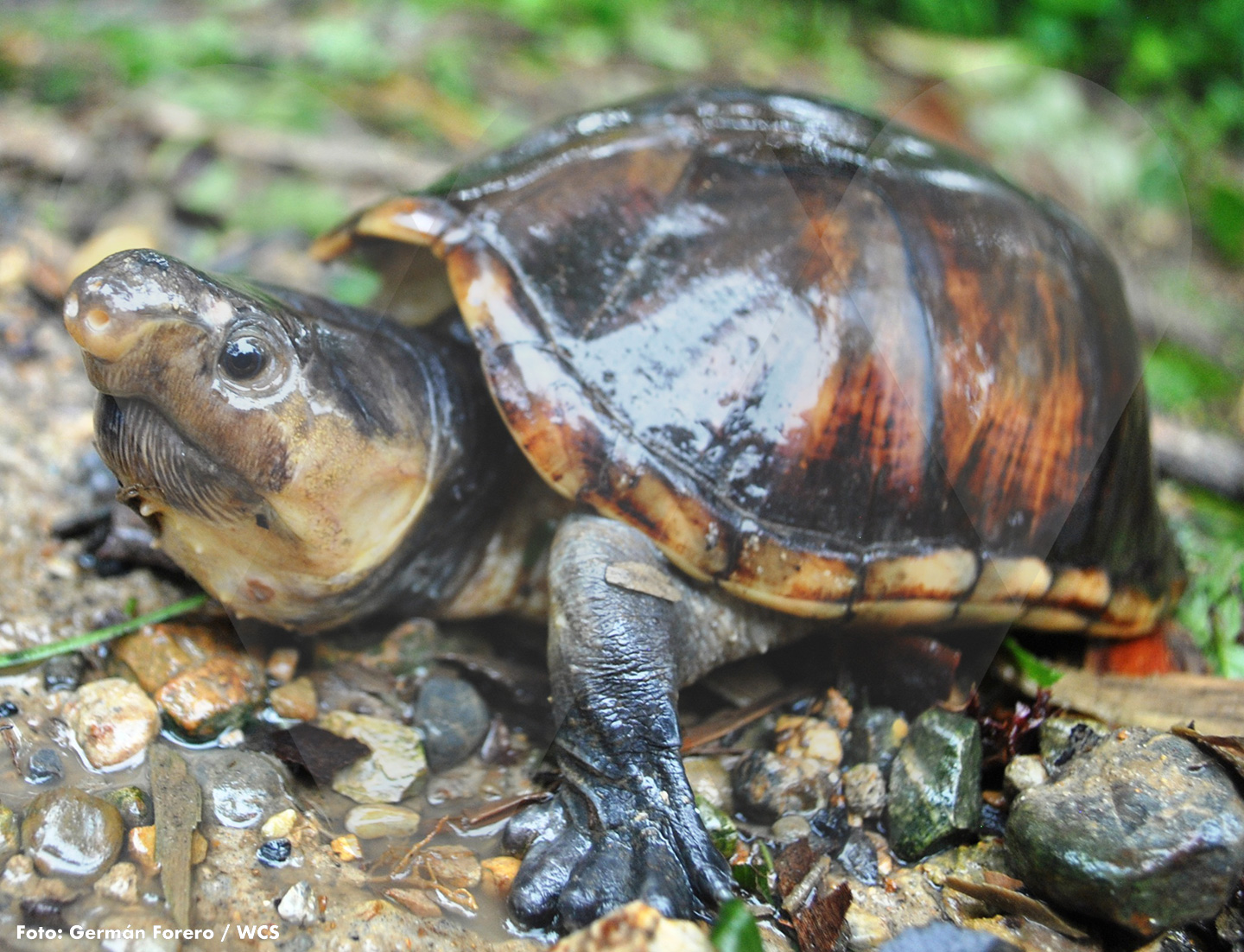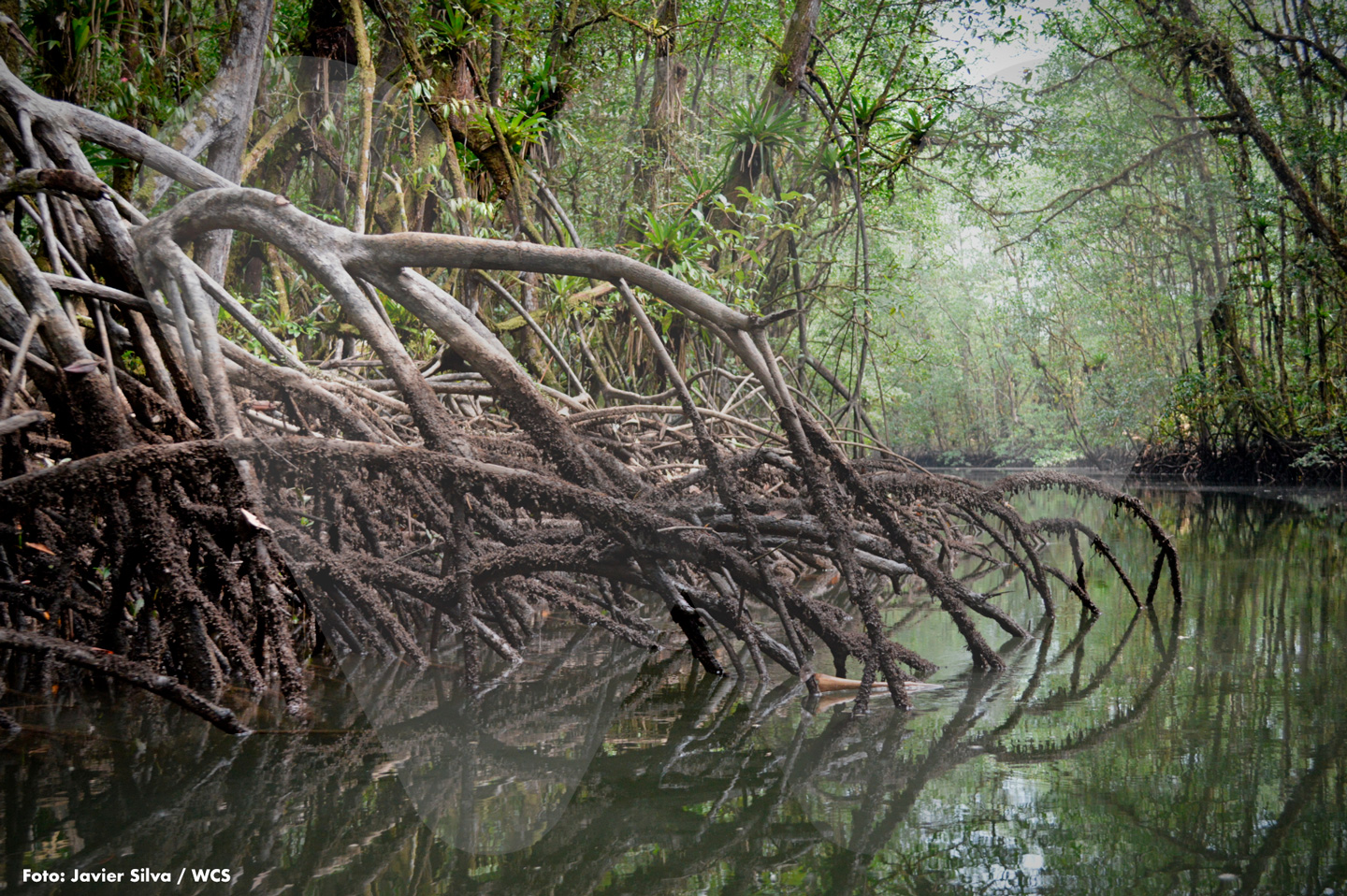This is one of the four species of endemic turtles in Colombia and one of the least studied. This region of Chocó, where in 2017 the creation of a protected zone was made official, would guarantee the future of this reptile, also known as ‘cabeza de trozo’ and in vulnerable condition due precisely to its reduced distribution. WCS Colombia and Turtle Survival Alliance will soon initiate a research in this region of the Pacific, to monitor its populations.

Germán Forero-Medina, Science Director of WCS Colombia and country coordinator for TSA, mentions that the last time he saw the ‘cabeza de trozo’ or ‘truenito’ turtle, an elusive reptile not more than 20 centimeters in length, was in 2019 in the vicinity of Pizarro, the main village of the municipality of Bajo Baudó (Chocó).
It appeared in its ideal setting: a mangual or marshy area, very close to the sea
And this incident, apparently normal, as this is a species that has been forever associated with this department and the San Juan and Docampadó Rivers, is today becoming a crucial event.

Because in 2017 a protected area - ‘El Encanto de los Manglares del Bajo Baudo’, an Integrated Management Regional District - was created precisely in the terrain where Forero-Medina observed the turtle.
Forero explains that having found the ‘tapaculo del Chocó’ – another of its vernacular names – in this protection area, could ensure the survival of its populations over time. This was never guaranteed but, little by little, it could begin to be a reality from this moment on.
Kinosternon dunni, its scientific name, is one of the four species of continental turtles endemic to Colombia (it only lives in the country), a group completed by Dahl’s toad-headed turtle (Mesoclemmys dahli), the Magdalena river turtle (Podocnemis lewyana) and the Atrato slider (Trachemys medemi).
It was discovered in 1947
The ‘truenito’ has been an appreciated turtle because it only lives in our territory but ironically, regardless of this condition, it is historically one of the least studied turtles, even though it is part of a genus rooted in America that groups many species.
It was described by Karl Schmidt in 1947, based on two female specimens collected in Bajo Baudó and then sent to the United States. One of them still rests in the California Academy of Sciences in San Francisco, one of the biggest natural history museums in the world.
And it was named after Emmet Reid Dunn [1894-1956], a prominent herpetologist of Haverford College, in Pensilvania (United States), who lived and studied in Colombia for many years. Federico Medem, herpetologist of German origin, born in Letonia, who worked for many years in Colombia until his death in Bogotá, and pioneer of the study of our reptiles, made some reports in the 1960 decade, based on three individuals. Later, researcher Olga Castaño-Mora, a pupil of Medem and forerunner of the study of chelonians in Colombia, reported only four individuals in 1997.
But, in 2012, Germán Forero-Medina started filling that gap when he decided to find out, together with his colleague Eladio Rentería, at the time researcher of the Universidad Tecnológica de Chocó and present researcher of the Environmental Research Institute of the Pacific (IIAP), if the ‘cabeza de trozo’ could occur in some place different from that site in Chocó. Besides, because another researcher, Mario Garcés, had by chance found a specimen in Acandí, municipality of the Chocó Caribbean.
“We went to the Atrato basin, near Quibdó, and specifically navigated the Quito River. We found a small population in San Isidro (Quito River), of some 19 individuals, a very special finding because we then knew that it lived in a basin that flows into the Caribbean and in a place different from the Baudó basin, that drains into the Pacific”, explains Forero-Medina. This was the first proof that the habitat of the turtle was not limited to the Bajo Baudó.
Additionally, they found that in the region, they thought that K. dunni was very much alike another species, very close to it, called Kinosternon leucostomum; that is, they thought it was the male of the latter, as it was very similar but bigger. Today, unfortunately, the place has been destroyed by illegal gold mining.
They will research its status
Precisely due to the pressures present in some of the zones where it occurs and as per the publication ‘Biology and Conservation of Turtles of Colombia’, K. dunni, besides the deforestation in the places where it lives, is part of some communities’ diet. But the most significant risk of all those it faces is, strictly, its reduced distribution. This means that any damage to its ecosystem, however small, could affect it very seriously and cause its extinction.

Consequently, WCS Colombia and Turtle Survival Alliance jointly with the Regional Autonomous Corporation for the Sustainable Development of Chocó - Codechocó – and the Community Council of Pizarro will soon begin, in Pizarro (Chocó), a monitoring of the species to evaluate the status of its habitat, its population (on which there is no information) and the uses that the community gives it, with the purpose of informing conservation processes. This research includes surveys with the communities within the Community Councils that form the protected area.